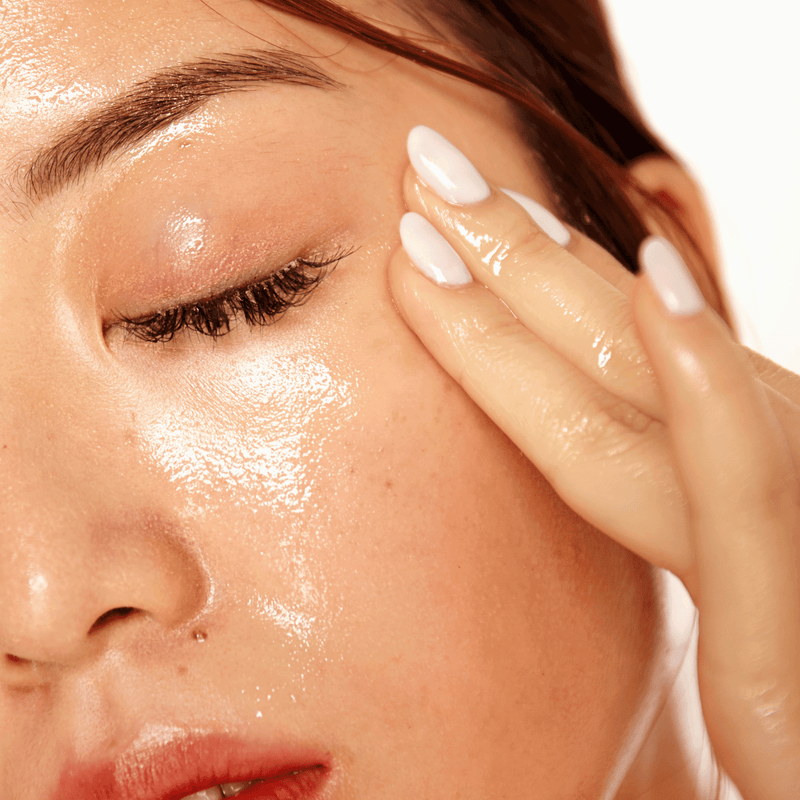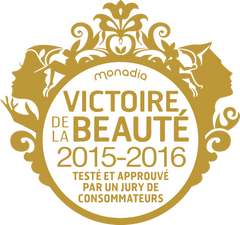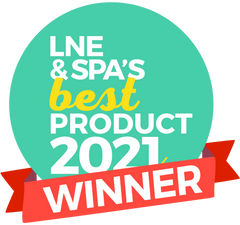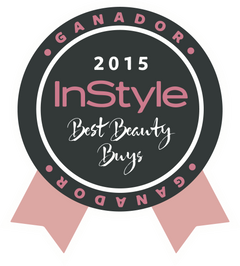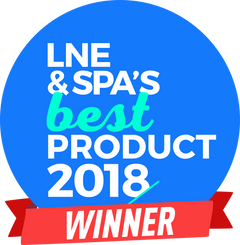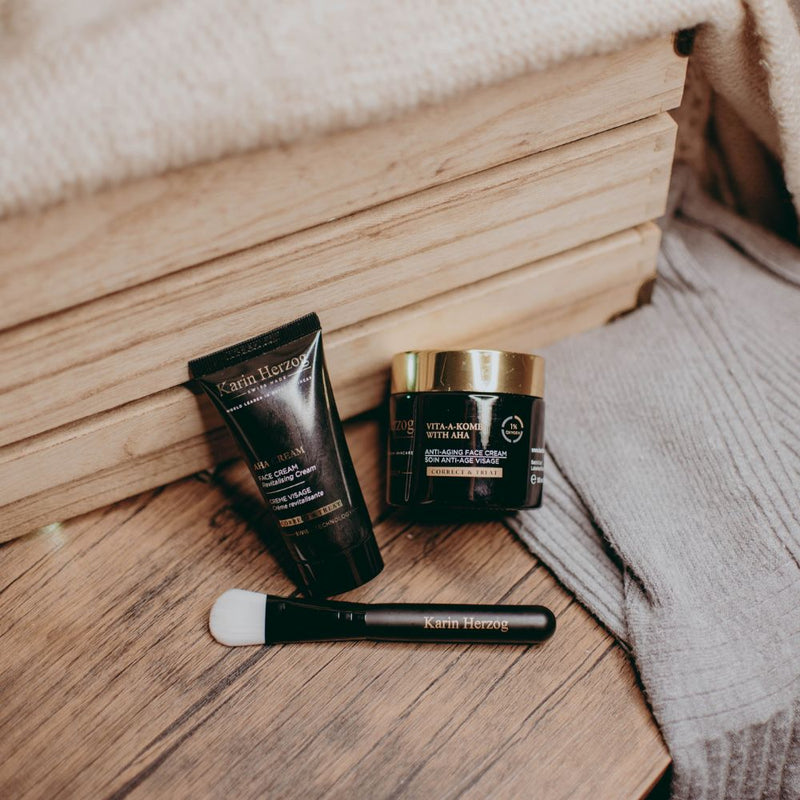
Active Ingredients in Skincare: The Power Behind Your Products
Active Ingredients in Skincare: The Power Behind Your Products Key Takeaways Active ingredients are scientifically proven compounds that create specific changes in your skin, unlike inactive ingredients that provide texture or preservation Essential active skincare ingredients include retinoids, vitamin C, niacinamide, alpha hydroxy acids, and beta hydroxy acids for various skin concerns Understanding what is an active ingredient helps you build more effective skincare routines and avoid ingredient conflicts Proper introduction and layering of active ingredients prevents irritation while maximizing benefits for anti-aging, acne treatment, and skin brightening Professional-grade active ingredients like those found in innovative brands deliver enhanced results through advanced delivery systems ___________________ When building an effective skincare routine, understanding what are active ingredients in skincare forms the foundation of achieving your skin goals. These powerful compounds are the workhorses of your skincare regimen, delivering targeted results for concerns ranging from fine lines and dark spots to acne and dullness. Unlike their inactive counterparts, active ingredients possess scientifically validated properties that create measurable changes in skin structure and function. Understanding Active Ingredients vs Inactive Ingredients What Is an Active Ingredient in Skincare What is an active ingredient in the context of skincare? An active ingredient is a scientifically proven compound that produces a specific biological effect on the skin. These ingredients undergo rigorous testing to demonstrate their efficacy in addressing particular skin concerns. Unlike inactive ingredients that serve as carriers, preservatives, or texture enhancers, active ingredients are the components responsible for visible improvements in skin appearance and health. The distinction between active and inactive ingredients lies in their mechanism of action. Active ingredients work at the cellular level, influencing processes like cell turnover, collagen production, melanin synthesis, or sebum regulation. They penetrate various layers of the skin to deliver targeted benefits, making them essential for addressing specific skincare concerns effectively. How Active Skincare Works Active skincare formulations require careful consideration of concentration, pH levels, and compatibility with other ingredients. The potency of an active ingredient often determines its effectiveness, but higher concentrations don't always translate to better results. Many active ingredients have optimal concentration ranges where they deliver maximum benefits with minimal irritation. Professional formulations often utilize advanced delivery systems to enhance active ingredient penetration and stability. Some innovative brands like Karin Herzog have developed unique active oxygen technology that delivers ingredients to the dermal level, providing enhanced results through patented oxygen-infused formulations that bridge the gap between professional and consumer products. Essential Anti-Aging Active Ingredients Retinoids: The Gold Standard for Skin Renewal Retinoids represent the gold standard among anti-aging active ingredients, encompassing retinol, retinyl palmitate, and prescription-strength tretinoin. These vitamin A derivatives accelerate cellular turnover, stimulate collagen production, and improve skin texture. Retinoids work by normalizing skin cell development and reducing the appearance of fine lines, wrinkles, and hyperpigmentation. Karin Herzog Vita-A-Kombi 1 offers an innovative approach to retinol delivery, combining 1% active oxygen with vitamin A and E to provide anti-aging benefits while minimizing typical retinoid irritation. For more mature or problematic skin, Karin Herzog Vita-A-Kombi 2 contains 2% active oxygen with the same vitamin combination for enhanced results. These formulations require gradual introduction to prevent irritation, starting with lower concentrations two to three times per week. Vitamin C: Antioxidant Protection and Brightening Vitamin C, particularly in the form of L-ascorbic acid, magnesium ascorbyl phosphate, or sodium ascorbyl phosphate, serves as a potent antioxidant and collagen booster. This active ingredient protects against environmental damage while brightening skin tone and reducing dark spots. Vitamin C works synergistically with vitamin E and ferulic acid to enhance stability and efficacy. Karin Herzog E&R Pro Booster combines powerful hyaluronic acid with vitamin C to deliver instant lifting and plumping effects, providing an effective alternative to injectable fillers while boosting collagen production and improving skin elasticity. Morning application of vitamin C products provides optimal protection against free radical damage throughout the day. Alpha Hydroxy Acids: Chemical Exfoliation for Smoother Skin Alpha hydroxy acids (AHAs) including glycolic acid, lactic acid, and mandelic acid function as chemical exfoliants that remove dead skin cells and promote cellular renewal. These active ingredients improve skin texture, reduce the appearance of pores, and enhance product absorption. Glycolic acid, with its smallest molecular size, penetrates deepest but may cause more irritation than larger-molecule AHAs like lactic acid. Active Ingredients for Acne and Problem Skin Beta Hydroxy Acids for Deep Pore Cleansing Beta hydroxy acids, primarily salicylic acid, excel at treating acne-prone and oily skin types. This oil-soluble active ingredient penetrates into pores to dissolve excess sebum and dead skin cells that contribute to blackheads and whiteheads. Salicylic acid also possesses anti-inflammatory properties that help calm existing breakouts while preventing new ones from forming. Karin Herzog Oxygen Face utilizes 2% active oxygen to effectively treat acne and problematic skin, working to deeply cleanse pores, fight bacteria, and normalize sebum production while providing hydration and promoting healing. This approach offers a gentler alternative to traditional salicylic acid treatments while maintaining effectiveness for acne management. Niacinamide: Multi-Benefit Skin Regulator Niacinamide, a form of vitamin B3, offers multiple benefits for acne-prone skin while remaining gentle enough for daily use. This versatile active ingredient regulates sebum production, minimizes pore appearance, and provides anti-inflammatory effects that reduce redness and irritation. Niacinamide also strengthens the skin barrier function and can be combined with most other active ingredients without causing conflicts. Benzoyl Peroxide: Antimicrobial Action Benzoyl peroxide serves as an antimicrobial active ingredient that targets acne-causing bacteria while providing mild exfoliation. This ingredient releases oxygen that creates an inhospitable environment for anaerobic bacteria responsible for inflammatory acne. Starting with lower concentrations helps minimize potential dryness and irritation while still providing effective acne treatment. Hydrating and Barrier-Supporting Active Ingredients Hyaluronic Acid: Superior Hydration Technology Hyaluronic acid stands out as a superior hydrating active ingredient capable of holding up to 1000 times its weight in water. This humectant draws moisture from the environment and deeper skin layers to the surface, providing immediate plumping effects and long-term hydration. Different molecular weights of hyaluronic acid penetrate various skin depths, with smaller molecules reaching deeper layers while larger molecules provide surface hydration and barrier protection. Karin Herzog E&R Pro Booster harnesses the power of sodium hyaluronate (a more stable form of hyaluronic acid) combined with vitamin C to increase skin's water content while providing an instant tightening effect and helping plump lines and wrinkles. This advanced formulation demonstrates how combining active ingredients can enhance overall effectiveness. Ceramides: Barrier Restoration Ceramides function as active ingredients that restore and maintain the skin's natural barrier function. These lipid molecules fill spaces between skin cells, preventing water loss and protecting against environmental irritants. Ceramide-containing products are particularly beneficial for dry, sensitive, or compromised skin barriers, helping restore optimal moisture levels and resilience. Peptides: Cellular Communication Peptides represent a diverse group of active ingredients that signal various cellular processes related to collagen production, muscle contraction, and skin repair. Copper peptides promote wound healing and collagen synthesis, while signal peptides communicate with skin cells to increase protein production. Neurotransmitter peptides temporarily reduce muscle contractions that contribute to expression lines, offering a topical alternative to more invasive treatments. How to Combine Active Ingredients Safely Understanding Ingredient Compatibility Understanding ingredient compatibility is crucial when incorporating multiple active ingredients into your skincare routine. Some combinations enhance effectiveness, while others may cause irritation or reduce potency. Vitamin C and retinoids, for example, are best used at different times of day due to pH and stability considerations. Morning vitamin C application provides antioxidant protection, while evening retinoid use maximizes cellular renewal during skin's natural repair cycle. Layering Techniques for Maximum Efficacy Layering active ingredients requires attention to molecular size, pH requirements, and penetration needs. Generally, thinner, water-based products containing active ingredients should be applied before thicker, oil-based formulations. However, some active ingredients perform better when buffered with moisturizers, particularly for sensitive skin or when introducing potent ingredients. Combinations to Avoid Certain active ingredient combinations should be avoided or carefully managed to prevent irritation or reduced effectiveness. Mixing vitamin C with retinoids can cause instability and irritation, while combining multiple exfoliating acids may over-strip the skin. However, some combinations work synergistically, such as niacinamide with salicylic acid for acne-prone skin, or hyaluronic acid with any active ingredient to enhance hydration and minimize potential dryness. Choosing Active Ingredients for Your Skin Type Oily and Acne-Prone Skin Oily and acne-prone skin benefits most from oil-soluble active ingredients like salicylic acid and niacinamide, which address excess sebum and enlarged pores. These skin types can typically tolerate higher concentrations and more frequent application of exfoliating acids. Focus on ingredients that regulate oil production, unclog pores, and provide antibacterial benefits without over-drying the skin. Dry and Mature Skin Dry and mature skin responds well to hydrating active ingredients like hyaluronic acid and ceramides, combined with anti-aging ingredients such as retinoids and vitamin C. These skin types require gentler introduction schedules and may benefit from buffering active ingredients with moisturizers to minimize potential irritation. Focus on barrier-strengthening ingredients alongside age-fighting actives for optimal results. Sensitive Skin Considerations Sensitive skin requires careful selection and gradual introduction of active ingredients, starting with gentler options like lactic acid instead of glycolic acid, or encapsulated retinol rather than tretinoin. Patch testing new active ingredients and monitoring skin response helps prevent adverse reactions. Anti-inflammatory ingredients like niacinamide and azelaic acid often provide benefits without causing irritation in reactive skin types. Building an Effective Active Ingredient Routine Starting Your Active Skincare Journey Creating a successful active skincare routine begins with identifying your primary skin concerns and selecting one or two active ingredients that address those issues. Start with lower concentrations and gradually increase frequency and potency as your skin adapts. A typical progression might involve using a new active ingredient once or twice per week initially, then increasing to every other day, and finally daily use if well-tolerated. For those new to active ingredients, Karin Herzog Additional Sweet provides gentle nourishment and comfort during the initial weeks of active ingredient introduction, helping skin adjust while delivering vitamins and nutrients to support the skin barrier. Morning vs Evening Routines Morning and evening routines should serve different purposes when incorporating active ingredients. Morning routines focus on protection with antioxidant active ingredients like vitamin C, while evening routines emphasize repair and renewal with ingredients like retinoids or exfoliating acids. This timing strategy maximizes each ingredient's benefits while minimizing potential conflicts. Monitoring and Adjusting Your Routine Monitoring skin response throughout the introduction process helps optimize your active ingredient routine. Signs of appropriate adaptation include initial mild tingling or slight dryness that subsides within a few days. Persistent irritation, excessive dryness, or worsening skin concerns indicate the need to reduce frequency, lower concentrations, or reassess ingredient selection. Common Mistakes When Using Active Ingredients Over-Enthusiasm and Irritation Over-enthusiasm when starting active skincare routines often leads to irritation, compromised skin barriers, and disappointing results. The most frequent mistake involves introducing multiple active ingredients simultaneously or using concentrations that exceed skin tolerance. This approach can cause redness, peeling, increased sensitivity, and paradoxically worsen the concerns you're trying to address. Inconsistent Application Inconsistent application represents another significant obstacle to achieving desired results from active ingredients. Many active ingredients require weeks or months of consistent use to produce visible improvements. Sporadic application or frequently switching products prevents skin from adapting and showing measurable changes. Establishing a realistic routine and maintaining consistency yields better long-term results than aggressive, short-term approaches. Neglecting Sun Protection Neglecting sun protection while using active ingredients can exacerbate skin damage and increase photosensitivity. Many active ingredients, particularly retinoids and exfoliating acids, increase skin's vulnerability to UV damage. Daily broad-spectrum sunscreen application becomes even more critical when incorporating active ingredients into your routine, regardless of weather conditions or indoor/outdoor activities. Professional vs Over-the-Counter Active Ingredients Concentration Differences The concentration of active ingredients significantly impacts their effectiveness and potential for side effects. Over-the-counter products typically contain lower concentrations that provide gradual improvements with minimal risk of irritation. For example, OTC retinol products usually contain 0.25% to 1% concentrations, while vitamin C serums range from 10% to 20% L-ascorbic acid. When to Seek Professional Guidance Understanding when to seek professional guidance versus using OTC active ingredients depends on your skin concerns' severity, previous treatment responses, and tolerance levels. Persistent acne, significant hyperpigmentation, or advanced aging signs may warrant professional-strength active ingredients, while maintenance and prevention often respond well to consistent use of quality OTC formulations. Active ingredients represent the cornerstone of effective, results-driven skincare routines. Understanding what constitutes an active ingredient and how different compounds address specific skin concerns empowers you to make informed choices about your skincare investments. While the world of active skincare can seem overwhelming initially, starting with proven ingredients like retinoids, vitamin C, or gentle acids provides a solid foundation for achieving healthier, more radiant skin. Remember that patience and consistency, combined with proper sun protection, remain your most powerful tools for maximizing the benefits of active ingredients while minimizing potential adverse effects. Frequently Asked Questions What is the difference between active and inactive ingredients in skincare? Active ingredients are scientifically proven compounds that create specific changes in your skin, such as reducing wrinkles or treating acne. Inactive ingredients serve as carriers, preservatives, or texture enhancers without providing direct skin benefits. How many active ingredients can I use at once? Start with one active ingredient at a time to assess tolerance, then gradually add others. Most skin types can handle 2-3 active ingredients when properly spaced throughout the day and week, though sensitive skin may require fewer. When should I start using active ingredients in my skincare routine? You can begin incorporating gentle active ingredients like niacinamide or low-concentration vitamin C in your early twenties for prevention. More potent ingredients like retinoids are typically introduced in the late twenties or thirties for targeted anti-aging benefits. Do active ingredients make your skin more sensitive to the sun? Yes, many active ingredients including retinoids, AHAs, and vitamin C can increase photosensitivity. Daily broad-spectrum SPF 30 or higher sunscreen is essential when using active ingredients, regardless of weather conditions or planned activities. How long does it take to see results from active ingredients? Most active ingredients require 4-12 weeks of consistent use to show visible improvements. Hydrating ingredients like hyaluronic acid may provide immediate effects, while anti-aging ingredients like retinoids typically take 2-3 months to demonstrate significant changes.



